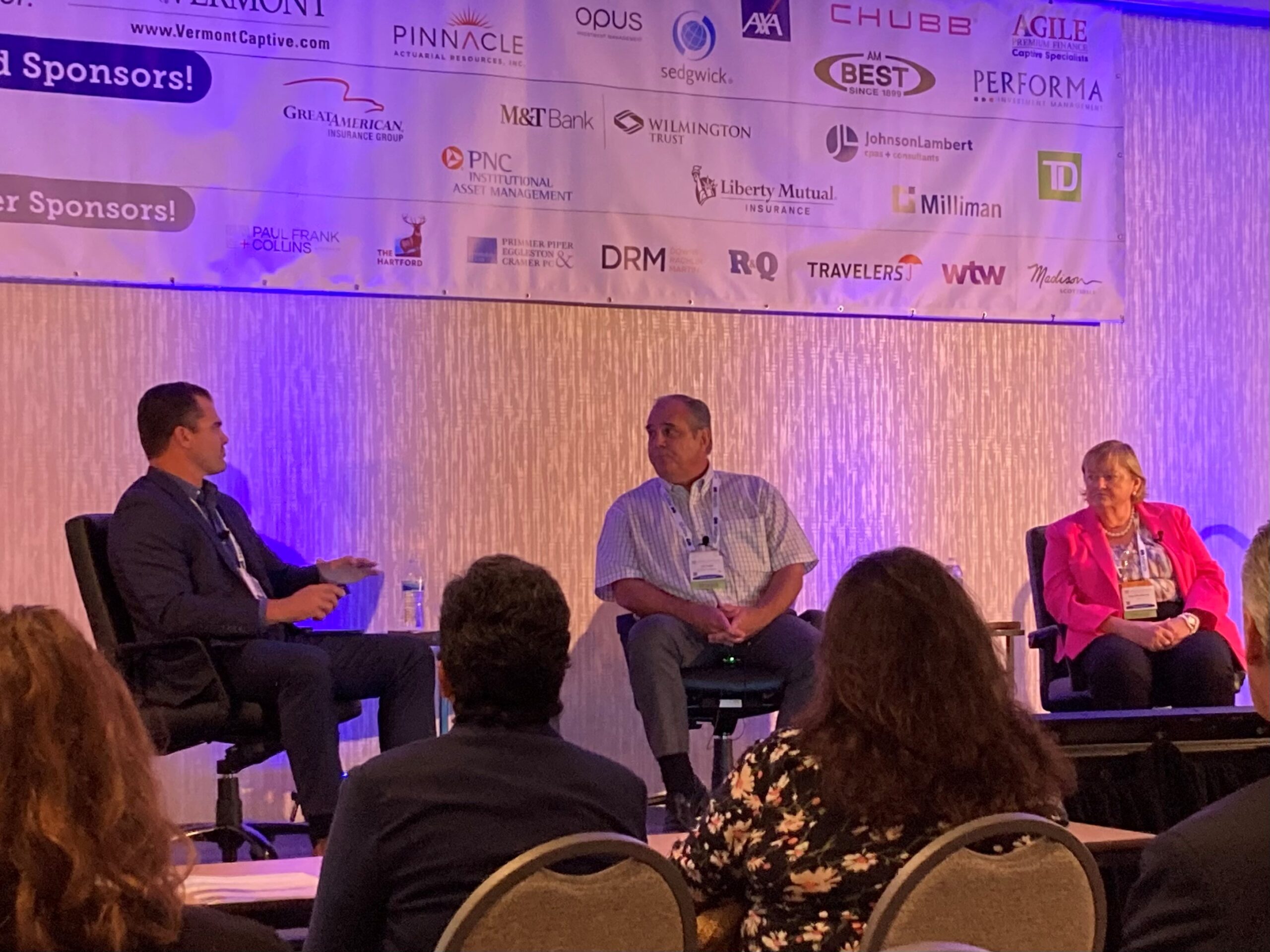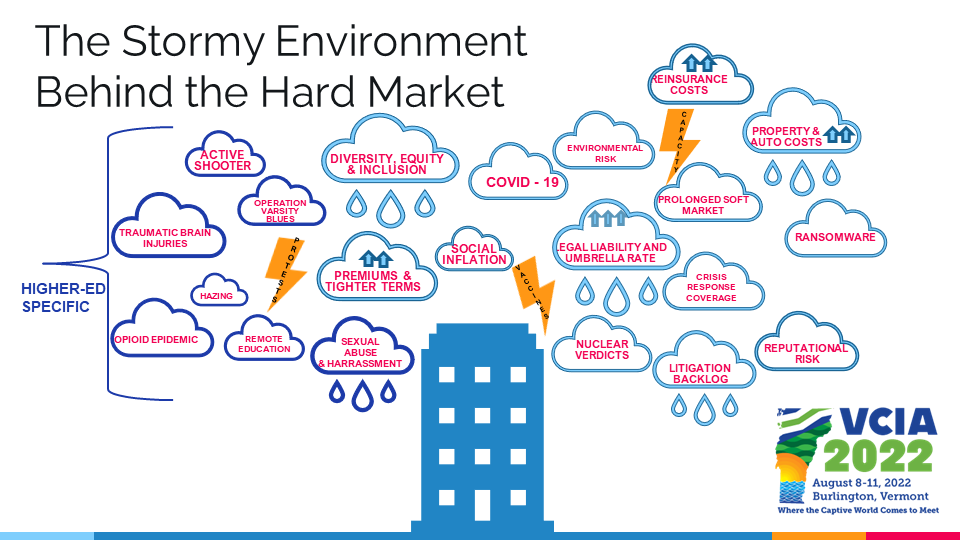
People
Topics
Share
A (Brief) VCIA Session Recap
I had the pleasure of speaking at Vermont Captive Insurance Association (VCIA) Annual Conference last week, joined by two colleagues with impressive backgrounds. Jeff Caudill, Director of Risk Management at Haskell and a client of Spring’s, and Mary Ellen Moriarty, Vice President, Property & Casualty at College Insurance Company (EIIA) joined me to discuss different ways that captives can be used to tackle the hard market hurdles we’re currently facing in the insurance industry.
With myself as the moderator and consulting actuary, Jeff representing a brand new single parent captive, and Mary Ellen representing a veteran captive, it was a well-rounded panel that pulled in multiple perspectives.
The Clouds Behind the Hard Market

This visual does a great job at illustrating the many challenging atmospheric effects in the insurance air right now, particularly on the property & casualty (P&C) side of the fence (no pun intended). With Mary Ellen representing the higher education space, we felt it important to highlight unique risks that colleges and universities are grappling with, in addition to the other complicating factors (or clouds) we see here.
In my work I’ve seen that this climate has resulted in increased carrier profitability for certain lines over the last couple of years, such as auto liability, but decreased carrier profitability in others (such as cyber and commercial property).
In higher education, Mary Ellen explained there have been hard market consequences due to underwriter inability to achieve profitability, and as noted in the visual, they are dealing with risks many organizations don’t need to think about, like traumatic brain injuries, the general public accessing the property, and a different kind of medical malpractice. As a result, there are a limited number of carriers willing to provide coverage in this space. As a nod to captive advantages, EIIA was able to grow surplus from their captive prior to the hard market, from 2002 to 2022, which has been extremely helpful in this “stormy environment.”
This success story led us to a discussion around the business case for captives, a snapshot of which you can see here in this video.
Jeff then gave a bit of a play-by-play regarding the process, implementation, timelines and driving forces behind Haskell’s decision to switch from a group captive to a single parent captive (a synopsis of which you can find in this case study).
Looking Ahead
Both Jeff and Mary Ellen described some next steps for their captives, which may include writing in:
- Integrated deductible plans
- Directors & officers
- Cyber
- Employee benefits
- Other P&C lines
Food For Thought
Like most good things in life, you kind of had to be there to get the full experience and maximize your take-aways. So I don’t want to give it all away, but I will leave you with some food for thought that came out of the Q&A for the session. If you want to know the answers, please get in touch!
- With a newer captive that hasn’t had time to build up surplus yet, how do you think about keeping your captive adequately capitalized?
- What are the next coverages or exposures you see on the horizon for higher ed that you would like to add to the captive program?
- What were the key drivers for your CFO to be on board to establish the captive?
- Can you talk about how reviver statutes have impacted obtaining/maintaining abuse coverage?
- As we face uninsured risks like communicable disease, how do you assess the use of the captives together with unique insurance solutions like parametric options? What is the value pitch to the organization?
- What type of coverages perform well in the hard market and why?
- Does forming a captive in a hard market only make financial sense if your company’s loss ratio is below the industry average?
- How do you handle cyber in a captive? Do you have a TPA on retainer?
- Are you using the captive for deductible reimbursement? Do you take any quota share or excess layer risk?
- What does your auto exposure look like and what risk mitigation strategies have you implemented (via the captive or otherwise)?
- How do you market your captive to new members who may not understand captives? Especially in light of the hard market, where captives are especially attractive.
And last but perhaps most importantly:
- What do you think the impact to the insurance market will be if the Browns win more than 2 games this year?
As you can see, we can have some fun in the captive world, and much of it was had at VCIA! Before you leave, check out our captive business case video here, inspired by this presentation.


